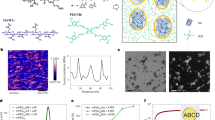Abstract
This study presents a novel methodology for the fabrication of bioadhesives composed of poly(2-hydroxyethyl acrylate) (PHEA), which demonstrate superior mechanical properties. Hydrogels based on PHEA were effectively synthesized through a strategy that obviates the need for crosslinkers, utilizing in situ polymerization of high-concentration 2-hydroxyethyl acrylate (HEA) monomers under persistent agitation. Optimal operational conditions, such as polymerization duration and HEA monomer concentration, were screened through rheological evaluations. In addition, the introduction of glycerol to the PHEA hydrogels yielded improvements in water-retention capacity, thus resolving limitations frequently observed in conventional aqueous-based hydrogels. Tests assessing adhesive properties indicated that the PHEA hydrogels, synthesized without crosslinkers, exhibited exceptional adhesion capabilities that exceeded those of commercially available tissue sealants. This economically viable and readily scalable fabrication technique provides a compelling pathway for the creation of robust, biocompatible bioadhesives well-suited for biomedical utilization.
Graphical abstract







Similar content being viewed by others
Data availability
The data supporting the findings of this study are available from the corresponding author upon reasonable request.
References
Spotnitz WD, Burks S (2008) Hemostats, sealants, and adhesives: components of the surgical toolbox. Transfusion 48:1502–1516. https://doi.org/10.1111/j.1537-2995.2008.01703.x
Mehdizadeh M, Weng H, Gyawali D, Tang L, Yang J (2012) Injectable citrate-based mussel-inspired tissue bioadhesives with high wet strength for sutureless wound closure. Biomaterials 33:7972–7983. https://doi.org/10.1016/j.biomaterials.2012.07.055
Mehdizadeh M, Yang J (2013) Design strategies and applications of tissue bioadhesives. Macromol Biosci 13:271–288. https://doi.org/10.1002/mabi.201200332
Padula C, Colombo G, Nicoli S, Catellani PL, Massimo G, Santi P (2003) Bioadhesive film for the transdermal delivery of lidocaine: in vitro and in vivo behavior. J Control Release 88:277–285. https://doi.org/10.1016/S0168-3659(03)00015-4
Singer AJ, Quinn JV, Hollander JE (2008) The cyanoacrylate topical skin adhesives. Am J Emerg Med 26:490–496. https://doi.org/10.1016/j.ajem.2007.05.015
Lee KY, Mooney DJ (2012) Alginate: properties and biomedical applications. Prog Polym Sci 37:106–126. https://doi.org/10.1016/j.progpolymsci.2011.06.003
Burdick JA, Prestwich GD (2011) Hyaluronic acid hydrogels for biomedical applications. Adv Mater 23:H41–H56. https://doi.org/10.1002/adma.201003963
Wendels S, Avérous L (2021) Biobased polyurethanes for biomedical applications. Bioact Mater 6:1083–1106. https://doi.org/10.1016/j.bioactmat.2020.10.002
Pei X, Wang J, Cong Y, Fu J (2021) Recent progress in polymer hydrogel bioadhesives. J Polym Sci 59:1312–1337. https://doi.org/10.1002/pol.20210249
Peppas NA, Hilt JZ, Khademhosseini A, Langer R (2006) Hydrogels in biology and medicine: from molecular principles to bionanotechnology. Adv Mater 18:1345–1360. https://doi.org/10.1002/adma.200501612
MonleónPradas M, Gómez Ribelles JL, Serrano Aroca A, Gallego Ferrer G, Suay Antón J, Pissis P (2001) Porous poly(2-hydroxyethyl acrylate) hydrogels. Polymer 42:4667–4674. https://doi.org/10.1016/S0032-3861(00)00742-4
Andreopoulos AG (1989) Properties of poly(2-hydroxyethyl acrylate) networks. Biomaterials 10:101–104. https://doi.org/10.1016/0142-9612(89)90040-9
Wu S, Wang TW, Du Y et al (2022) Tough, anti-freezing and conductive ionic hydrogels. NPG Asia Mater 14:65. https://doi.org/10.1038/s41427-022-00410-7
Park SH, Shin HS, Park SN (2018) A novel pH-responsive hydrogel based on carboxymethyl cellulose/2-hydroxyethyl acrylate for transdermal delivery of naringenin. Carbohydr Polym 200:341–352. https://doi.org/10.1016/j.carbpol.2018.08.011
Kim JH, Sim SJ, Lee DH et al (2004) Preparation and properties of phea/chitosan composite hydrogel. Polym J 36:943–948. https://doi.org/10.1295/polymj.36.943
Sánchez-Correa F, Vidaurre-Agut C, Serrano-Aroca Á, Campillo-Fernández AJ (2018) Poly(2-hydroxyethyl acrylate) hydrogels reinforced with graphene oxide: remarkable improvement of water diffusion and mechanical properties. J Appl Polym Sci 135:46158. https://doi.org/10.1002/app.46158
Huang X, Li J, Luo J, Gao Q, Mao A, Li J (2021) Research progress on double-network hydrogels. Mater Today Commun 29:102757. https://doi.org/10.1016/j.mtcomm.2021.102757
Tang L, Zhang D, Gong L et al (2019) Double-network physical cross-linking strategy to promote bulk mechanical and surface adhesive properties of hydrogels. Macromolecules 52:9512–9525. https://doi.org/10.1021/acs.macromol.9b01686
Tanii H, Miki N, Hayashi M, Hashimoto K (1988) Cytotoxicity of acrylamide and related compounds to mouse neuroblastoma and rat schwannoma cells. Arch Toxicol 61:298–305. https://doi.org/10.1007/BF00364853
Bielecka-Kowalska A, Czarny P, Wigner P et al (2018) Ethylene glycol dimethacrylate and diethylene glycol dimethacrylate exhibits cytotoxic and genotoxic effect on human gingival fibroblasts via induction of reactive oxygen species. Toxicol Vitr 47:8–17. https://doi.org/10.1016/j.tiv.2017.10.028
Seo Y, Kim BS, Balance WC, Aw N, Sutton B, Kong H (2020) Transparent and flexible electronics assembled with metallic nanowire-layered nondrying glycerogel. ACS Appl Mater Interfaces 12:13040–13050. https://doi.org/10.1021/acsami.9b21697
Zeng L, Gao G (2023) Stretchable organohydrogel with adhesion, self-healing, and environment-tolerance for wearable strain sensors. ACS Appl Mater Interfaces 15:28993–29003. https://doi.org/10.1021/acsami.3c05208
Gao Y, Zhou J, Xu F et al (2023) Highly stretchable, self-healable and self-adhesive double-network eutectogel based on gellan gum and polymerizable deep eutectic solvent for strain sensing. ChemistrySelect 8:e202204463. https://doi.org/10.1002/slct.202204463
Zhang R, Liu C, Wei C et al (2023) Charge-transfer polymeric hydrogels with self-healing, injectable, thermosensitive, adhesive, and antibacterial properties for diabetic wound healing. Adv Mater Technol 8:2201527. https://doi.org/10.1002/admt.202201527
Zhu J, Zhou H, Gerhard EM et al (2023) Smart bioadhesives for wound healing and closure. Bioact Mater 19:360–375. https://doi.org/10.1016/j.bioactmat.2022.04.020
Acknowledgements
This work was supported by funding from the National Research Foundation of Korea (NRF) grants funded by the Korean Government (MSIT) (2021R1F1A1056201, 2021R1C1C1013157, 2021M3C1C3097647). This research was also supported by a grant from the Korea Health Technology R&D Project through the Korea Health Industry Development Institute (KHIDI), funded by the Ministry of Health & Welfare (No. HP23C0040) and the Korea Institute of Ceramic Engineering and Technology (KICET, 1415187241).
Author information
Authors and Affiliations
Corresponding authors
Ethics declarations
Conflict of interest
The authors declare that they have no known competing financial interests or personal relationships that could have appeared to influence the work reported in this paper.
Additional information
Publisher's Note
Springer Nature remains neutral with regard to jurisdictional claims in published maps and institutional affiliations.
Rights and permissions
Springer Nature or its licensor (e.g. a society or other partner) holds exclusive rights to this article under a publishing agreement with the author(s) or other rightsholder(s); author self-archiving of the accepted manuscript version of this article is solely governed by the terms of such publishing agreement and applicable law.
About this article
Cite this article
Kim, S.Y., Kang, JW., Jeong, E.H. et al. Synthesis of bioadhesive PHEA hydrogels without crosslinkers through in situ polymerization and sustained mechanical mixing. Korea-Aust. Rheol. J. 36, 71–78 (2024). https://doi.org/10.1007/s13367-023-00084-9
Received:
Revised:
Accepted:
Published:
Issue Date:
DOI: https://doi.org/10.1007/s13367-023-00084-9



